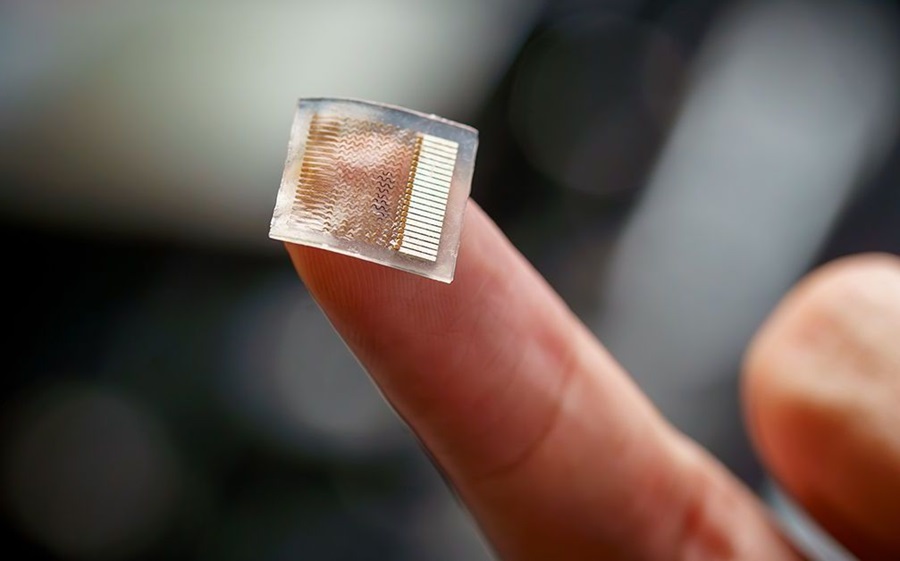Wearable Ultrasound Patch Enables Continuous Blood Pressure Monitoring
Posted on 21 Nov 2024
Traditional blood pressure measurements using a cuff provide a single, snapshot reading, which can miss important patterns in blood pressure fluctuations. Researchers have now developed an advanced wearable ultrasound patch that allows for continuous, noninvasive blood pressure monitoring. This wearable device offers a constant flow of blood pressure waveform data, enabling detailed tracking of blood pressure trends. The device, which has undergone extensive clinical validation on more than 100 patients, marks a major achievement in continuous cardiovascular health monitoring. Published in Nature Biomedical Engineering, this technology has the potential to transform blood pressure monitoring both in clinical settings and at home.
Developed by researchers at the University of California San Diego (La Jolla, CA, USA), the patch, about the size of a postage stamp, is small, flexible, and adheres to the skin. When placed on the forearm, it provides real-time, precise readings of blood pressure from deep within the body. The patch is composed of silicone elastomer and includes a series of small piezoelectric transducers sandwiched between stretchable copper electrodes. These transducers emit and receive ultrasound waves that track changes in the diameter of blood vessels, translating these signals into blood pressure readings. The new wearable patch builds on an earlier prototype, improving upon it with two key innovations aimed at enhancing its performance for continuous monitoring.

First, the piezoelectric transducers were packed closer together, expanding the patch’s coverage to better target smaller, clinically relevant arteries, such as the brachial and radial arteries. Second, a backing layer was added to dampen excess vibrations from the transducers, improving the clarity of the signals and the accuracy of the tracking. In validation tests, the patch’s results were comparable to those from a traditional blood pressure cuff and the arterial line, a clinical device used for continuous blood pressure monitoring, though the arterial line is highly invasive, limits patient mobility, and can cause discomfort. The patch, however, offers a more simple, reliable, and comfortable alternative.
The researchers performed extensive safety and accuracy tests, involving 117 participants. One set of tests had seven individuals wearing the patch during daily activities like cycling, raising arms and legs, performing mental tasks, meditating, eating, and drinking energy drinks. In a larger group of 85 participants, the patch was evaluated during postural changes, such as moving from sitting to standing. In all tests, the patch’s readings closely matched those of a blood pressure cuff. The device was also tested in a clinical setting with 21 patients in a cardiac catheterization lab and four patients in the intensive care unit after surgery, where the patch’s measurements closely aligned with those from the arterial line. This shows the patch's potential as a noninvasive alternative for blood pressure monitoring. Looking forward, the team is preparing for large-scale clinical trials and plans to incorporate machine learning to enhance the device’s capabilities. They are also working on a wireless, battery-powered version for long-term use, which will integrate seamlessly with hospital systems.
“A big advance of this work is how thoroughly we validated this technology, thanks to the work of our medical collaborators,” said Sheng Xu, a professor in the Aiiso Yufeng Li Family Department of Chemical and Nano Engineering at UC San Diego, in whose lab the device was pioneered. “Blood pressure can be all over the place depending on factors like white coat syndrome, masked hypertension, daily activities or use of medication, which makes it tricky to get an accurate diagnosis or manage treatment. That’s why it was so important for us to test this device in a wide variety of real-world and clinical settings. Many studies on wearable devices skip these steps during development, but we made sure to cover it all.”








 Guided Devices.jpg)





